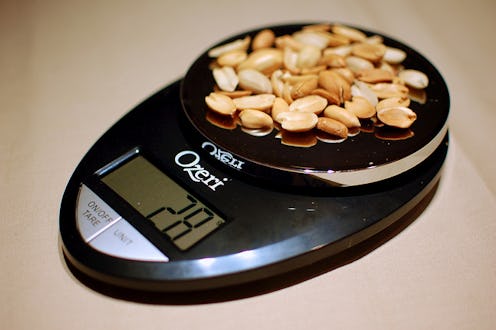
I only needed 24 hours to read journalist Harriet Brown’s book Body of Truth: How Science, History, and Culture Drive Our Obsession With Weight — and What We Can Do About It. Over that period, I didn't do much else but read the book, wholly focused on eating disorders and how to ameliorate them. Sure, I slept, responded to a few emails, walked my dog a couple miles — but mostly I devoured the text, taking notes on blue index cards, mind often blown at what I was learning about how I could go about learning to love my body.
I also ate.
I mention eating because I’ve had an eating disorder for a long time. More than half my life, actually. You name a symptom — a “behavior”; in in-patient parlance; a stereotype, even — and I've probably had or done it. These days, I’m less symptomatic — and, in what must be genuine progress, learning to accept that. I’m teaching myself each day, through every action, to say, “I don’t need to be hospitalized-sick.”
In Body of Truth, Brown writes that shifting the near-ubiquitous paradigm (fat = bad, thin = good) that is 21st century culture is a tricky task. “It’s intensely, incredibly hard to buck the mainstream on an issue that holds so much power over our lives. At the end of the day, we all have to come to terms with these issues in our own way and for ourselves.”
Coming to terms with the cadre of issues that perpetuate my eating disorder involves a lot of... getting into my own head and monitoring myself consciously. I do the training wheels version of what's called intuitive or competent eating, trying to consume foods I enjoy, listening to my appetite’s cues, accepting variation and deviation. Feast and famine are all equal parts of my eating life, as they should be on the road to full recovery.
There aren’t any foods I won’t eat — just so long as, when I’m home, I measure or weigh everything.
Still, old habits die hard. Except for regular Coke (I’ve never had one, and now that's just this weird badge I wear), there aren’t any foods I won’t eat — just so long as, when I’m home, I measure or weigh everything.
Yes. Everything. For a time, I was a pastry chef, so my food scale has long been my kitchen bestie. That dash of almond milk in a mug of coffee? Two and a quarter ounces, thank you very much. This morning’s raw cocoa, açai chia pudding? Six ounces, of which I ate four because — here’s the intuitive eating part — I was full (or just sick of chia seed pudding). I snacked on one ounce of dried goji berries. Then I went for a walk.
My dog weighs 11 pounds, and her legs are shorter than Barbie’s. But, when I’m working from home, I like to take her for as long a stroll as she can handle. While I was reading, I paused, and we walked nearly two miles. I thought about Brown’s book — how walking, for me, was an activity that brought me pure joy. Of course, I was recording my steps (I love the Moves app) — but that didn’t prevent me from noticing the world around me: the way a blue jay flying fast looks like a clenching fist or the occasional adorable sniff of my pup.
After the walk, I resumed reading. I was hungry — extra hungry, but working — and over the course of five hours, I weighed out three one-ounce servings of roasted peanuts. In between, I ate 30 messy grams of dark chocolate that oozed smoked salted caramel. Two Medjool dates: 40 grams.
I weighed out three one-ounce servings of roasted peanuts. In between, I ate 30 messy grams of dark chocolate.
Another walk, this one briefer. Four ounces of orange and red grape tomatoes. Twenty-eight grams of roasted garlic hummus, dolloped into a ramekin, eaten with a spoon.
In between all that measuring, of course, I was reading and taking notes.
Brown’s book convincingly urges readers to rethink conventional wisdom on the health-weight relationship, even though in the final pages she admits to sometimes still wishes she weighed less than she did (after nearly a decade of working on “focusing on what [she does] rather than what [she weighs].”
And maybe it’s that last note, that caveat that we’re all works in progress, that caused me to… do nothing differently while I read. My scales (body or food) haven’t been dragged to the dumpster. My measuring cups aren’t heading to Goodwill. What Brown reminded me in Body of Truth is how diverse our ways of being can be in daily life. My eating patterns work for me, and though to another person weighing out one’s three-ounce flute of champagne might spoil the celebration, for me, that sip of a caloric beverage is still one great big accomplishment worth a heartfelt and grateful toast.
Body of Truth: How Science, History, and Culture Drive Our Obsession With Weight — and What We Can Do About It by Harriet Brown, $13, Amazon
Images: Creative Commons